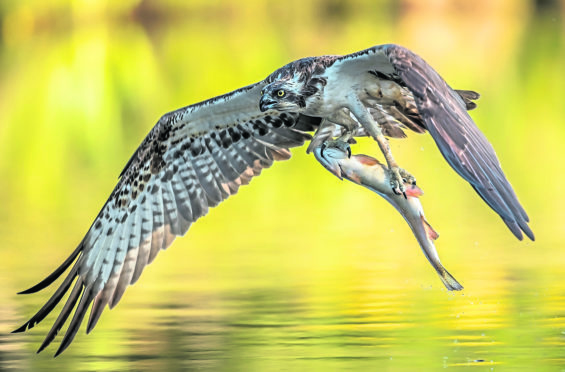The number of crimes against birds of prey in Scotland has fallen to its lowest level in years.
New figures from the Partnership for Action Against Wildlife Crime (Paw) Scotland show there were just nine illegal acts against the animals during 2017, down 36% from the 14 the previous year.
They include just one incident of poisoning – the lowest since these records began in 2004.
During the year, buzzards, owls and a hen harrier were killed, while a golden eagle, osprey and merlin were all victims of disturbances.
There were also two shootings and two illegal trappings.
Environment Secretary Roseanna Cunningham praised the stats but insisted that work must continue to further clamp down on these acts.
She said: “It is extremely frustrating that some criminals continue to undermine the good work that has been done by conservationists and land managers in recent years, with much of that work being done through Paw Scotland.
“We have recently provided additional resources to Police Scotland for the detection and investigation of wildlife crime and set up a review group to look at grouse moor management, including the potential for licensing this type of business.”
Alex Hogg, chairman of the Scottish Gamekeepers Association, said: “In 2010, in Scotland, there were 22 cases of raptor poisoning which was unacceptable.
“Seven years on, we are looking at one case, with shooting and trapping reduced substantially as well.
“Few, if any, types of crime in this country have declined at such a rate. This is welcomed by the SGA.”
He added: “The SGA has expelled six members in six years for wildlife crime convictions.
“Going forward, we believe satellite tagged birds should be monitored independently, in the same way SASA (Science & Advice for Scottish Agriculture) currently handles poisoning cases for government, so that everyone involved in tackling this issue can understand more about any loss of transmission from tags and can develop future strategy, from a position of trust.”
Duncan Orr-Ewing, head of species and land management for RSPB Scotland added: “We welcome the latest statistics produced by Scottish Government, whilst remaining vigilant about new techniques being employed by wildlife criminals to target birds of prey in known hotspots, as evidenced by the continuing suspicious disappearance of satellite tagged golden eagles and hen harriers.
“For these grouse moor areas, we believe that a licensing system is required, including firm sanctions to remove licences to operate, where wildlife protection laws are not being respected.”
